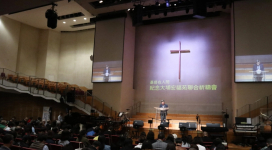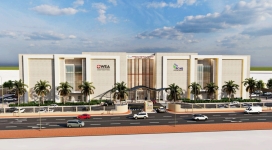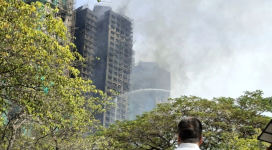Bandra, Bombay, India., Dec. 11 - Mount Mary Basilica, also known as Mount Mary church, Mauli Mary or the Mount, has been visited by people of all faiths since 1640, when the Portuguese built the Nossa Senhora de Monte chapel on the site.
The chapel crowned the hill till 1738, when it was razed by fire in a Maratha raid. According to a local legend, six months later the famous life-sized statue of the Virgin crafted in ornamented wood was recovered from the sea by a fisherman. The image was kept in the Aguada fort and later in the St Andrew’s church nearby, until the Mount was rebuilt in 1761 with funds from parishioners.
The statue was restored to its former position above a lavish gilded altar, which can still be seen today. Later, a long flight of stone steps was built on the eastern side of the church, leading to the main local market. The church has attracted pilgrims from all faiths over the years, though it’s not known when it gained its ‘miraculous’ reputation.
Local residents referred to it as the church of Maulicha Dongar or the Hill of the Mother, since they considered the Virgin to be a mother-goddess.
Devotees came here to worship and pray for the birth of a child or recovery from prolonged illness.
As the fame of the church grew, the church became an important centre of pilgrimage. The foundation for a new chapel designed by architect Shapoorjee Chandabhoy was laid on May 11, 1902, by the bishop of Daman. Built of khandki and Porbunder stone, the church is 110 feet long, 38 feet wide, and features an inner gallery running on three sides and new towers, each 80 feet wide. On Dec 5, 1954, the church was granted the status of a Basilica, a higher title than a shrine or church, from the Vatican in Rome.
This church really comes alive during Bandra Fair, which is held for a week from Sunday to Sunday following the birthday of the Virgin Mary on Sept 8.
During the Fair, scores of pilgrims from all over come to pray and attend mass at the shrine. According to tradition, they also offer candles and wax representations of objects such as houses, arms, legs and aeroplanes to ask for favours, offer thanks for a successful operation, or to pray for a safe journey.







